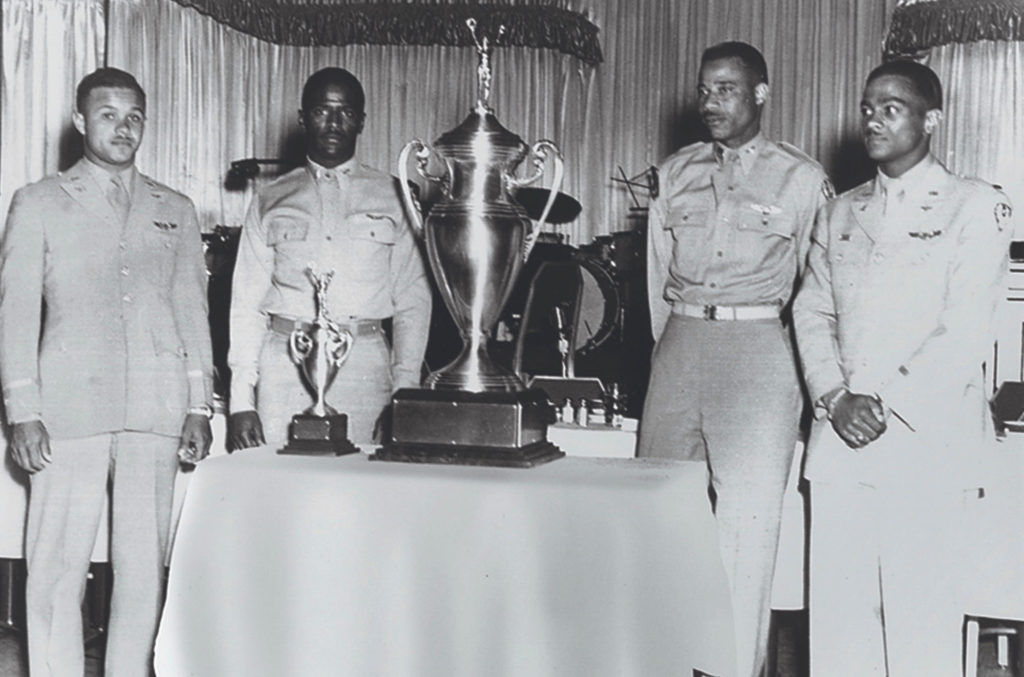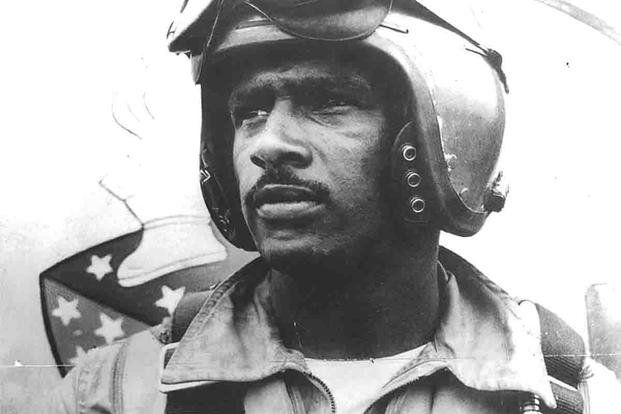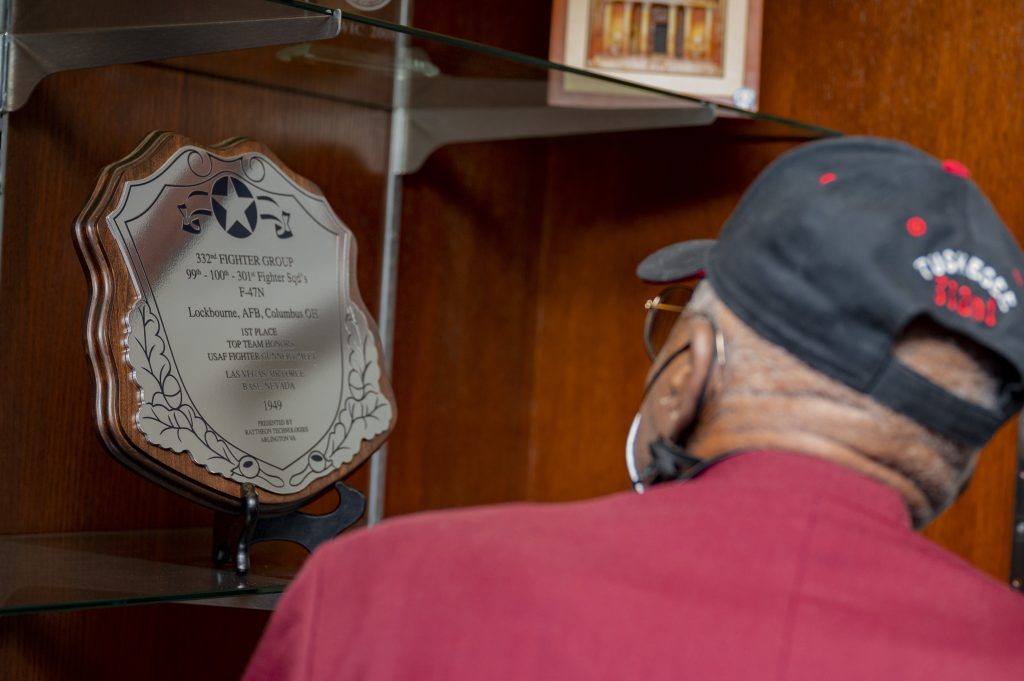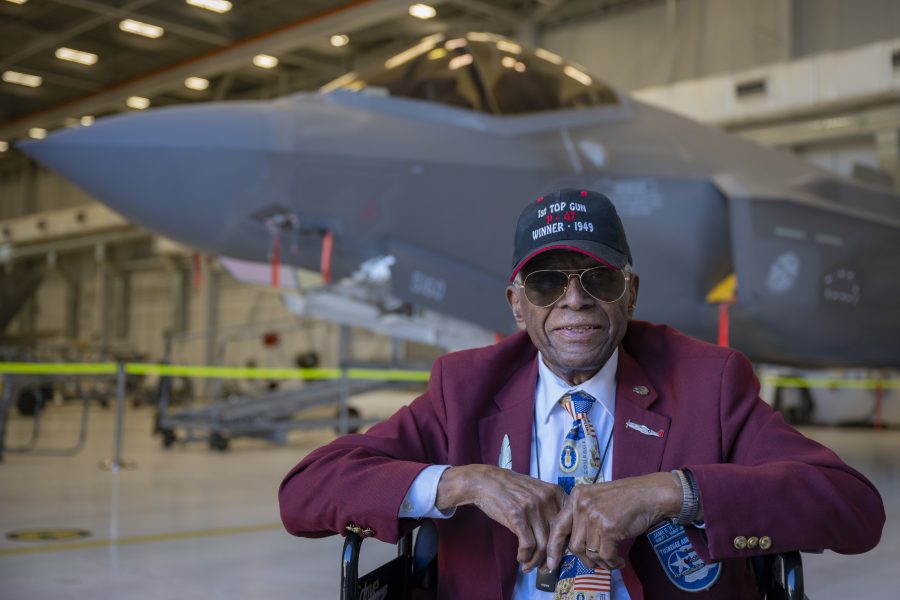On July 13, retired Air Force Lt. Col. James Harvey III will celebrate his 100th birthday, the latest milestone for an original Tuskegee Airman who also won the first ever ‘Top Gun’ trophy and was one of the first African American fighter jet pilots.
Though Harvey’s days in the cockpit are over, he takes on aging with the same attitude he applied to the stick and throttle.
“Being old doesn’t mean anything. It’s just a number,” Harvey told Air & Space Forces Magazine. “It’s your attitude: you have to keep a positive attitude about everything. If you do that, you’re all right. And have a sense of humor. If you don’t have a sense of humor, you’re dead in the water.”
Harvey’s journey to the Air Force began as a child when a formation of P-40 fighters buzzed over his hometown of Nuangola Station in northeast Pennsylvania.
“I was standing in my yard and I saw this and I said ‘I’d like to do that one day,’ and that was it,” he said in a previous interview with the American Veterans Center.
The path to pilot wings was winding: Harvey said the Army Air Corps initially turned him down in January 1943 due to his race. In March, he was drafted to build runways as an Air Corps engineer.
“I was driving bulldozers, graders, carry-alls, all earth-moving equipment,” he recalled. “All this dust and sweat, I said ‘No, this isn’t for me.’”
Harvey applied for the Aviation Cadet Training Program, and this time he was successful. By April 1945, he was a full-fledged combat pilot. As a product of the Tuskegee Army Air Field flying school, he was also a member of the Tuskegee Airmen, a group of African American aviators and ground crew who battled both discrimination and the Axis powers and received three Distinguished Unit Citations for their outstanding combat record over Europe. But by the time Harvey earned his wings, the war in Europe was nearly over.
“Hitler knew I was coming, that’s why he threw in the towel the following month of May,” he joked during the American Veterans Center interview.

That was not the end of Harvey’s flying career, though. In 1949, the fighter pilot and three other Tuskegee Airmen represented the 332nd Fighter Group at the newly-formed U.S. Air Force’s inaugural Aerial Gunnery Competition, a.k.a. ‘Top Gun,’ over Nellis Air Force Base, Nev.
The odds were stacked against the Tuskegee men, who flew older P-47 Thunderbolts against the newer P-51 Mustangs and F-82 Twin Mustangs of their White competitors. But Harvey and his teammates had a secret weapon.
“We all wanted to be the best, so if each one of us wants to be best and we succeed at what we do, then we’ve got quite an organization,” he said.
Harvey described himself as a perfectionist and joked that, as a child, he drew Disney characters better than Walt Disney himself.
“I wanted everything to be right,” he said.
That attitude paid off in pilot training, where he would “practice, practice, practice until I had it the way I wanted it, and come time for a check ride I could just breeze right through it.”
At Top Gun, he and other pilots competed in exercises such as aerial gunnery, panel strafing, dive-bombing, skip bombing, and rocket firing. Skip bombing, Harvey explained, involves flying extremely low, with the airplane propellors clearing the ground “by about a foot,” before releasing ordnance. Each of the Tuskegee pilots notched a perfect score.
“Fighter pilots like to fly low and fast, and this gave us a chance to fly low and fast,” he said.

After winning the ‘Top Gun’ meet, Harvey went on to fly the F-80 fighter jet in the Korean War, where he was awarded the Distinguished Flying Cross and 11 Air Medals. After Korea, he served as a flight commander, test pilot, and battle staff training officer for the commander of North American Aerospace Defense Command, according to the Air Force. Harvey retired in 1965 after a 22-year career and went on to work as a salesman for cold cut company Oscar Mayer.
Harvey had many medals and memories from his military career, but something was missing. After winning ‘Top Gun’ in 1949, the Tuskegee team was recognized with a large silver trophy and what Harvey described as a room full of silence.
“There was no applause or anything like that because we weren’t supposed to win it,” Harvey said in a 2022 video produced by AARP. “Little did I know that this was the last time the public would see the trophy for 55 years.”
The trophy vanished, and the results were recorded as ‘unknown’ for nearly 46 years, according to the Air Force. The trophy might still have been in storage today if not for a historian named Zellie Rainey Orr, who, according to the Washington Post, found the trophy in storage at the National Museum of the U.S. Air Force in 2005. One of the Tuskegee Airmen, Lt. Col. Harry Stewart brushed the buried trophy off as “just a military screw-up,” he told Aviation History in 2012. But Harvey believed there was more to it.
“They took our pictures with the trophy, and they told us goodbye,” he said.

Whatever the case, the Air Force sought to make up for the error in 2022 by unveiling a plaque officially recognizing the 332nd Fighter Group team that won the meet 73 years earlier. The plaque is on display at the U.S. Air Force Weapons School at Nellis.
“We stand on the shoulders of giants in this profession, and Lt. Col. Harvey is one of those giants,” Gen. Mark Kelly, the head of Air Combat Command, said at the ceremony.
“I can finally close the pages on this chapter and say, ‘mission accomplished,’” Harvey said at the time.
Later that year, the champion saw Hollywood’s take on fighter jets in the form of “Top Gun: Maverick,” which he enjoyed despite its lack of realism, he told Air & Space Forces Magazine.
Despite the challenges he faced, Harvey said he cherished his military flying career, especially since he started without a hint of an aviation background.
“I never made a model, I didn’t know anything about aviation, but I really appreciated it,” he said. “The mere fact that I succeeded in flying school, graduated, then went off to a tactical outfit … it was like a dream and I thoroughly enjoyed it.”


